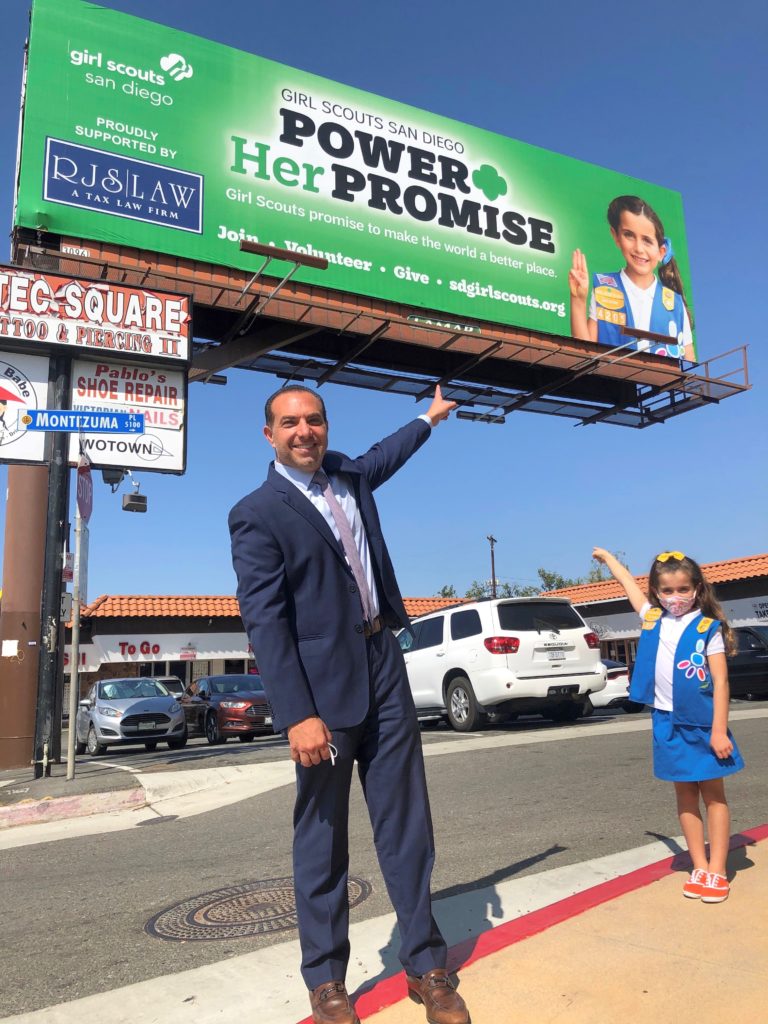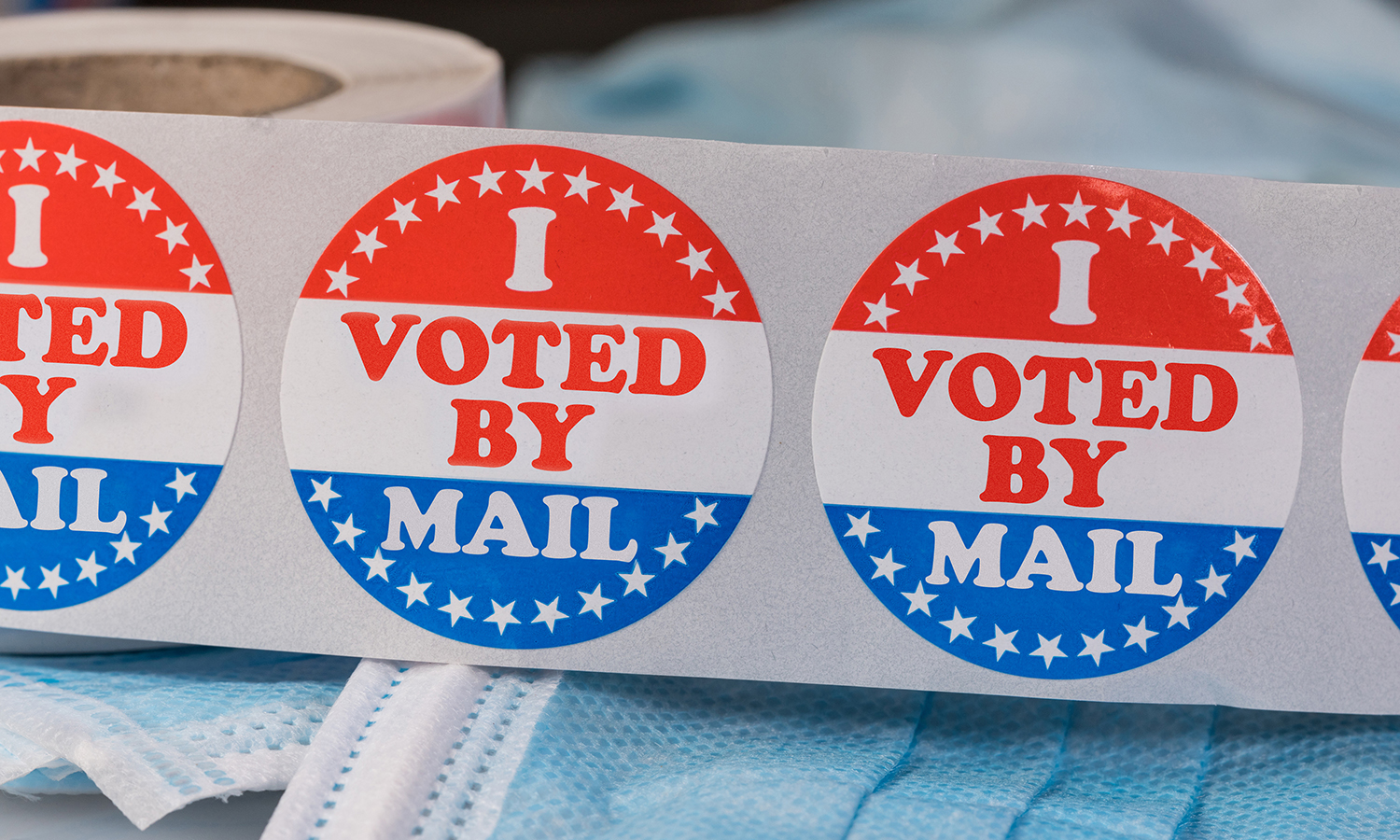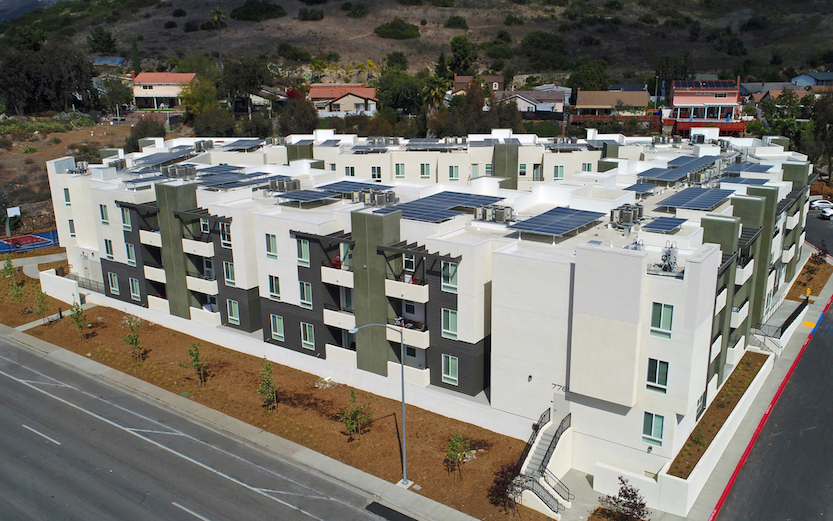Daily Business Report-Sept. 25, 2020
Photo by iStock_BackyardProduction.
COVID-19 opens a partisan
gap on voting by mail
Study documents a growing divide on preferences for absentee ballots
By Inga Kiderra | UC San Diego
Before the pandemic, there wasn’t any difference in the rates at which Democratic and Republican voters actually cast their ballots by mail or in-person. That may change now.
Based on nationally representative surveys conducted in the spring of 2020 and through the summer, researchers report a significantly greater preference for mail, or absentee, ballots among Democrats than among Republicans.
The researchers document for the first time a partisan gap in stated preferences in April 2020. By June, that gap had doubled – from a 10 percent difference in April to a 20 percent one in June. The gap was even wider among those exposed to scientific projections about the COVID-19 pandemic, with Democrats then expressing even greater preferences for mail ballots while Republicans were unaffected.
These findings are detailed in a study published in the Proceedings of the National Academy of Sciences.
After finalizing their PNAS paper, the research team – members of the New Electorate Project from UC San Diego, UC Riverside and the University of Southern California – continued to survey America’s eligible voters. The partisan gap, they say, has continued to grow: By late August, more than half of Democrats but less than a quarter of Republicans said they personally preferred to vote by mail.
“A serious partisan divide has opened up on preferences for voting by mail and has grown from a gap to a gulf over the past several months,” said Thad Kousser, a UC San Diego professor of political science, who is senior author on the PNAS study and the New Electorate Project’s principal investigator.
_________________________________________

Padres Development Team selected
to transform Tailgate Park Downtown
A Padres Development Team has won a competitive bidding process to transform Tailgate Park at Petco Park into a mixed-use destination called East Village Quarter.
The Padres Development Team includes partners Tishman Speyer and Ascendant Capital Partners.
A selection committee of City of San Diego staff and external experts at Civic San Diego and Jones Lang Lasalle (JLL) reviewed and scored the two top bids to the request for proposals to redevelop the four blocks between K Street and Imperial Avenue and 12th Avenue and 14th Street in San Diego’s East Village neighborhood.
The Padres Development Team is comprised of local and international leaders who specialize in sports, transit-centered and mixed-use development, urban design and finance. The team’s initial vision for the site is a destination that includes housing, public space, retail and office space that is designed to attract innovation economy companies to Downtown.
Additionally, the team’s vision includes the creation of a 1,600-space parking structure – 600 more parking spaces than currently exist on the site today – that protects the long-term parking needs of San Diegans attending Padres games and other events at the city-owned Petco Park.
The next steps for the project include taking the Selection Committee’s recommendation for the city to enter into an Exclusive Negotiation Agreement with the Padres for consideration to the City Council’s Economic Development and Intergovernmental Relations Committee and subsequently to the City Council.
_________________________________________

California exodus: An online industry
seizes COVID-19 to sell the Red State dream
CalMatters
Have you heard of the Facebook groups “Conservatives Leaving California” or “Life after California”? Disillusioned residents — many of them fed up with Democrat-dominated politics, high taxes, unaffordable housing and homelessness — are coming together by the tens of thousands in conservative online groups, fueling a cottage industry of real estate agents and mortgage lenders encouraging residents to move to states like Arizona, Idaho, Texas and Utah.
The groups target prospective transplants who skew white, right and over 30, often interspersing photos of brick houses and gleaming pools with ominous articles about Black Lives Matter protests, crime, immigration and pandemic closures.
Scott Fuller, who started LeavingTheBayArea.com and LeavingSoCal.com: “There’s a fair percentage of them that don’t know where they wanna go. They just know they want to go somewhere else.”
Bill Bishop, author of “The Big Sort: Why the Clustering of Like-Minded America Is Tearing Us Apart”: “What they’re doing is selling a way of life that then corresponds to political choice. It’s kind of pathetic, actually, but what the hell.”
_________________________________________

TuSimple and The Traton Group in
partnership for autonomous trucks
TruSimple, a San Diego-based self-driving technology company focused on heavy-duty trucks, has struck a partnership with The Traton Group to develop self-driving trucks.
The partnership is the first of its kind in Europe.
Traton and TuSimple have launched a development program to operate the first SAE level 4 autonomous hub-to-hub route between Södertälje to Jönköping in Sweden using Scania trucks. As part of the partnership, Traton has also taken a minority stake in TuSimple.
Traton’s goal is to test driverless truck fleets on roads throughout Sweden, Germany and other countries.
________________________________________

‘Power Her Promise’ with Girl Scouts San Diego
A celebration to help keep Girl Scouting available and affordable for all girls
Everyone is invited to join Girl Scouts San Diego today from 5 to 6 p.m. for the Power Her Promise Celebration, a free virtual event. The celebration will showcase current Girl Scouts and Girl Scout alums, and include videos and live music.
The gathering is the culmination of the Power Her Promise campaign, launched to replace the funds that are usually generated during Urban Campout, an outdoor gala held annually at Girl Scouts’ campus in Balboa Park. Janice Kurth and Kimberley Layton, who headed the event committee for Urban Campout: Explore the World, are now chairing the campaign.
The campaign name was inspired by the Girl Scout Promise a traditional pledge members take to “make the world a better place.”
To register for the Power Her Promise event or donate to the campaign, visit sdgirlscouts.org/php.
The Power Her Promise celebration and campaign are designed to help keep Girl Scouting available and affordable for all girls. Contributors include Gold Sponsors Qualcomm and Sharp Health Plan, as well as Silver Sponsors Cox, Los Angeles Chargers, Major Executive Search, Mission Federal Credit Union, Swinerton, We Can Rise, Inc., and Wells Fargo. Bronze Sponsors are Business Complete Solutions, Little Brownie Bakers, and RJS Law (which underwrote the billboard pictured above). Carlo and Nadine Daleo, Barbara and David Groce, Major Executive Search, and Katie and Dan Sullivan provided generous matching gifts to encourage participation.Arlene Harris and Marty Cooper, and Ron Moss were also a top-supporters.
Visit sdgirlscouts.org to learn about Girl Scouting opportunities for girls in grades K-12 and adult volunteers.
________________________________________
General Atomics awarded contract
to upgrade Remotely Piloted
Aircraft for Air National Guard
General Atomics Aeronautical Systems, Inc. (GA-ASI) has been awarded a $13.5 million contract to upgrade MQ-9 Block 1 and Block 5 Remotely Piloted Aircraft for the Air National Guard.
The procurement includes Generator Power Distribution Modules (GPDM) and kits to integrate the Beyond Line of Sight (BLOS) pod, LITENING pod and other mission payloads.
“We stand with our partners in the Air National Guard and are pleased to further enhance capabilities of their RPA systems,” said GA-ASI President David R. Alexander. “We are always excited to see the Air National Guard expand mission capability and improve mission effectiveness as they professionally and competently fly the MQ-9 to support both federal and state requirements.”
The GPDM and pod kits will provide Air National Guard with the ability to distribute more electrical AC and DC power to payloads integrated onto MQ-9 aircraft. The BLOS kits provide common aircraft interfaces to payloads integrated on the aircraft’s outboard wing hard points. This will enable 5th generation fighter aircraft (F-35 and F-22) to communicate and share data with 4th generation fighter aircraft (F-15 and F-16).
________________________________________
Talking Alone: researchers use artificial
intelligence tools to predict loneliness
For the past couple of decades, there has been a loneliness pandemic, marked by rising rates of suicides and opioid use, lost productivity, increased health care costs and rising mortality. The Covid-19 pandemic, with its associated social distancing and lockdowns, have only made things worse, say experts.
Accurately assessing the breadth and depth of societal loneliness is daunting, limited by available tools, such as self-reports. In a new proof-of-concept paper, published online Sept. 24, 2020 in the American Journal of Geriatric Psychiatry, a team led by researchers at University of California San Diego School of Medicine used artificial intelligence technologies to analyze natural language patterns (NLP) to discern degrees of loneliness in older adults.
________________________________________

Commentary
Gig worker bill: A lousy way to make law
By Dan Walters | CalMatters Columnist

California’s early 20th century reformers sought to thwart an obviously corrupt political system that benefited entrenched interests and ignored the larger public.
Their reforms included ways for voters to bypass the system through direct ballot box action — the initiative, the recall and the referendum.
The recall — forcing elected officials to vacate their positions — is the least used but pops up occasionally, most obviously in the 2003 recall of a governor, Gray Davis, just a year after he had won a second term.
Referendums — challenging laws passed by the Legislature — are more frequent, but still relatively rare. This year’s ballot includes one, Proposition 25, which is sponsored by the bail bond industry to overturn a landmark law outlawing cash bail for criminal defendants.
However, in the late 20th century, the initiative — proposing new laws by gathering signatures on petitions — evolved into a frequently employed vehicle for big dollar conflicts between powerful interests, particularly business and unions. Every election since has featured multiple ballot measures, the most famous or infamous being Proposition 13, the iconic, 1978 property tax limit.
The 2020 ballot is no exception. One of its many measures is Proposition 15, which would partially undo Proposition 13. It’s a union vs. business duel, as is Proposition 22, which would alter one of recent history’s most controversial bits of legislation, Assembly Bill 5.
AB 5 codified a 2018 state Supreme Court decision, dubbed Dynamex for the company involved, that cracked down on employers who classify workers as independent contractors rather than payroll workers. The Dynamex decision created a tight three-point test to qualify as an independent contractor that would, it was estimated, affect the status of more than two million Californians doing what’s been dubbed “gig work.”
The court case and AB 5 were unabashedly championed by labor unions, which depicted gig workers as mercilessly exploited serfs. However, union leaders were also plainly worried that the expansion of gig work would undermine union membership.
The unions’ highest profile targets were transportation services such as Uber and Lyft, which provide taxi-like dispatching services for drivers using their own vehicles, or delivery services such as Dynamex.
AB 5 not only codified the Dynamex decision, but granted exemptions to a clutch of specific occupations and professions that could not be easily unionized, such as physicians, lawyers, insurance and real estate agents, stockbrokers, barbers and hair stylists.
Uber, Lyft and other transportation firms immediately attacked the new law via initiative, resulting in Proposition 22, which would carve out a narrow exemption for them, but not touch other occupations.
Other exemptions were proposed in dozens of bills but AB 5’s author, Assemblywoman Lorena Gonzalez, a San Diego Democrat and former union official, retained tight control, adding a few more jobs to the exemption list.
It’s never been clear why some exemptions were granted and others denied. The mysterious process seemed to respond to those making the loudest noise, such as writers, photographers and others in media trades. The newspaper industry gained an exemption for those who toss papers on sidewalks, citing economic hardship.
It’s a lousy way to make law — pass a sweeping decree and then exempt a few favored interests. It resembles the time-dishonored practices of granting specific exemptions from the California Environmental Quality Act’s laborious processes, or from the ridiculously archaic “tied house” law governing the liquor business.
Reasonable people can differ on whether gig work is exploitive or liberating, but the irrational implementation of Dynamex is the sort of opaque insider game that pioneer political reformers were battling.


